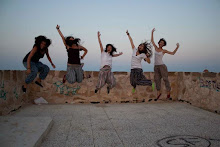Guardamar del Segura studio has given me the opportunity to go beyond Wurster style studio and be able to experience a real life case study. Living in this small resort town allows the student to delve into the culture and history of a case study on a first hand basis. The limited access to information from internet or a library system encouraged us to focus on the project and the analysis of the town and sites by visiting and sketching from a primary source research perspective. Students also learned from participating in presentations and guided tours from historians and archaeologists that helped us understand the history, architecture, and laws governing the ruins and ancient archaeological sites. The class was also complimented with local site visits to Phoenician and Islamic ruins. In order to expand our understanding of the national and Mediterranean architecture and history, field trips to major cities in Spain were incorporated. The Castle in Alicante, the Alhambra in Granada and the Mezquita in Cordoba for example contrasts the modern architecture of Santiago Calatrava's Ciudad de Artes y Ciencias in Valencia. One of the most important ways of learning architecture and understanding spaces and materiality is by traveling and experiencing the sites from a three dimensional perspective. After taking Architecture History series I would recommend taking a visit to other sites around Europe and Spain to further enrich your understanding of spacial relations with respect to human interactions with their built environment. After Studio ended I had the opportunity to travel to architectural sites such as Rome to analyze and observe architecture first hand.
This studio was a great closing to my undergraduate study of architecture as it prepared me into a different way of study and analysis of our world and surroundings. It incorporated analysis from history, anthropology, engineering, archaeology, city planning and physical geography that could be applied in any field from arts to science that could range from sculpture to plant biology. This broad spectrum of fields of study and understanding of the anthropological adaptation to social and earth processes through time allows us to better understand and create ''architecture' for human living that could link time and culture in the form of architectural spaces in the built form.
-Edgar Toledo

No comments:
Post a Comment